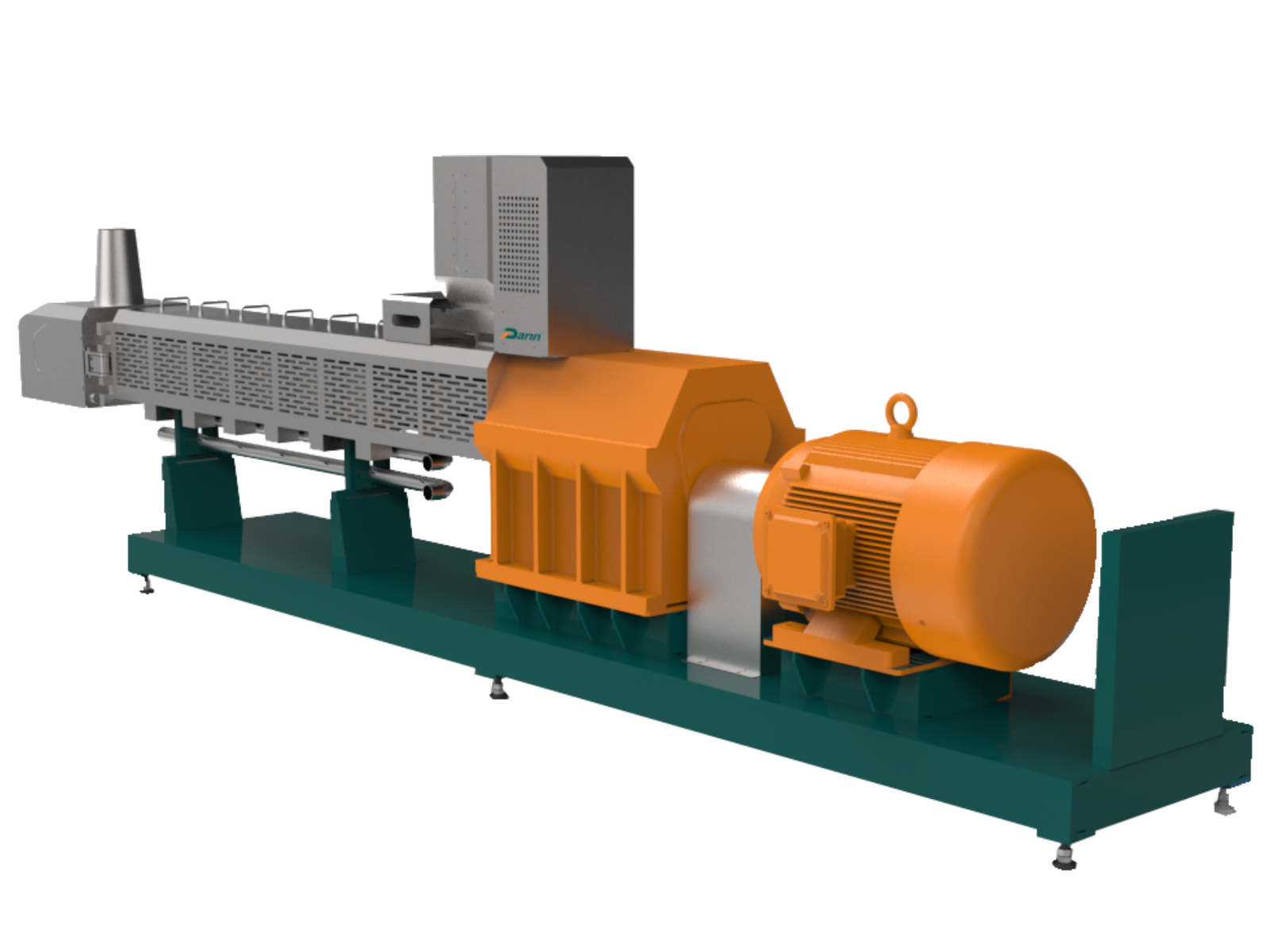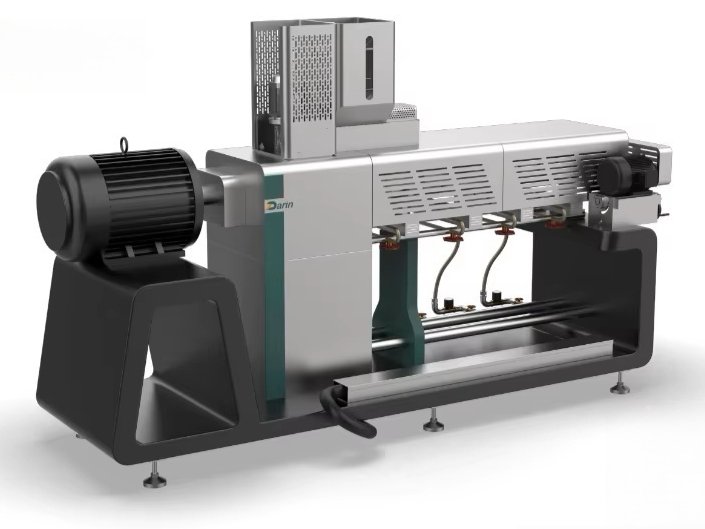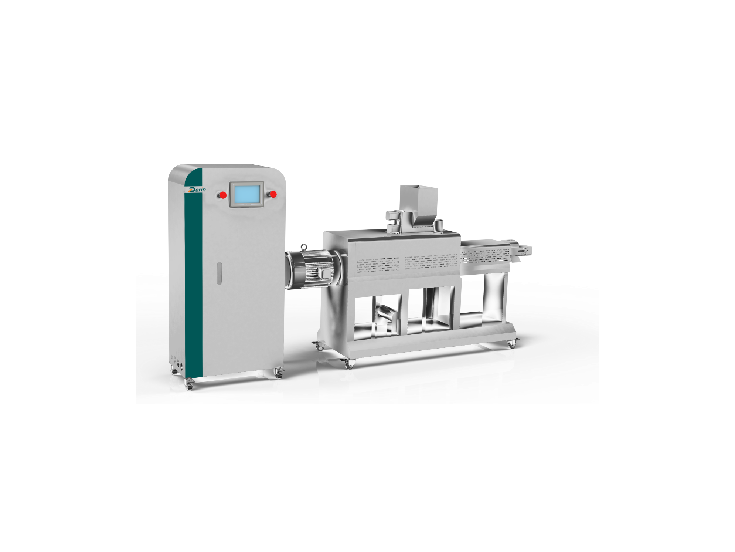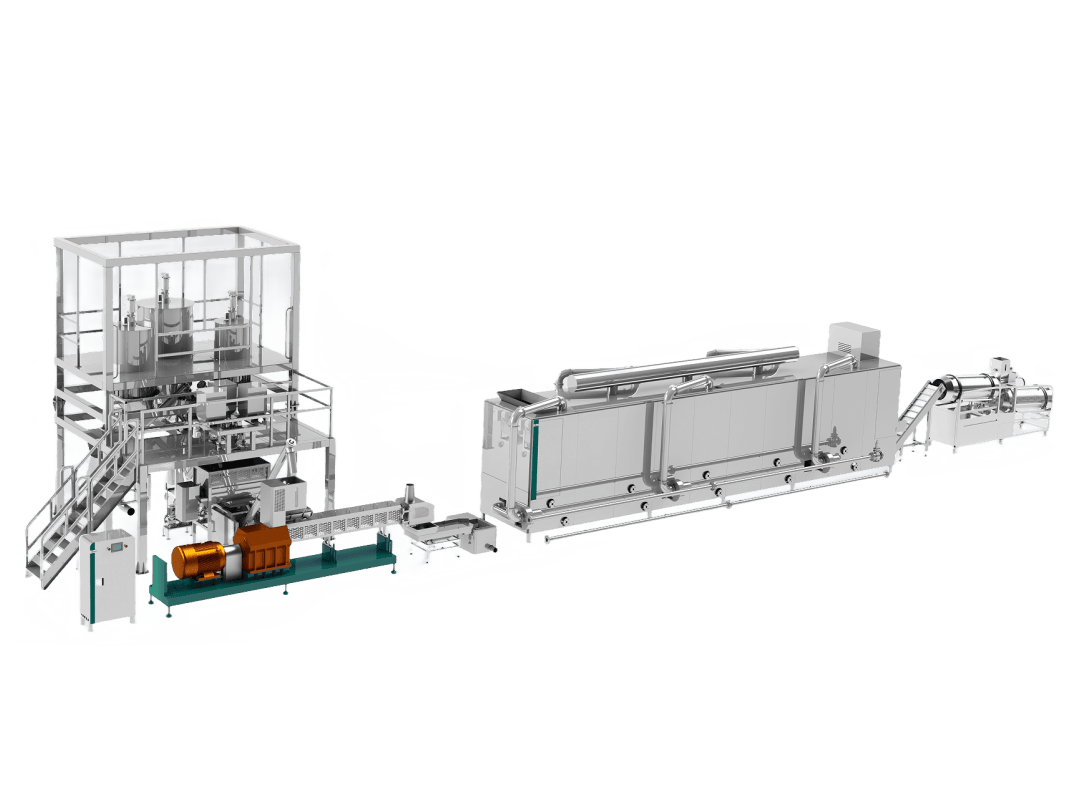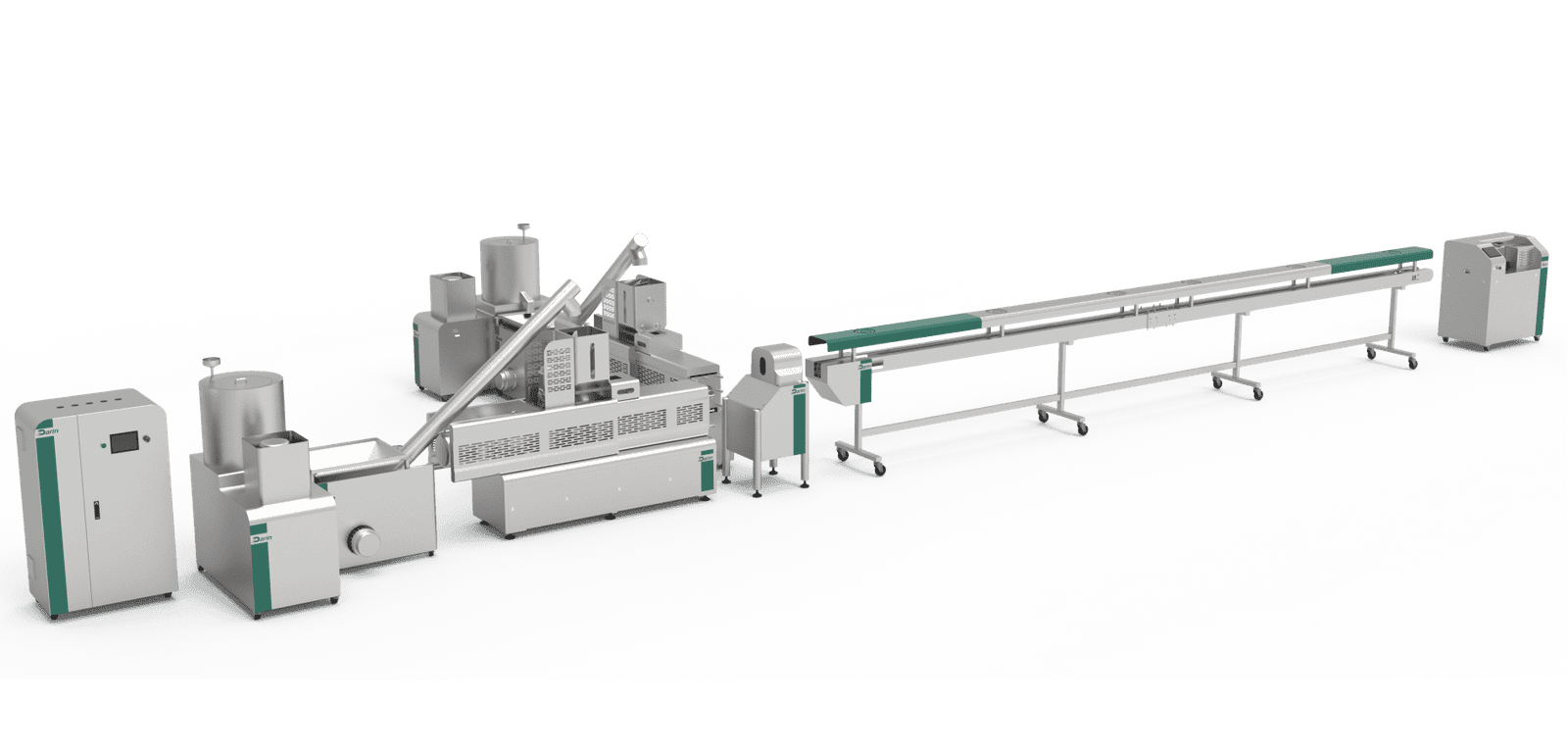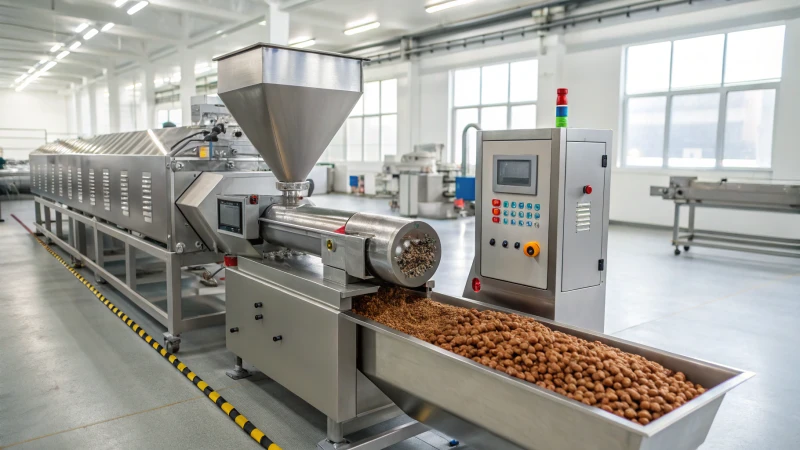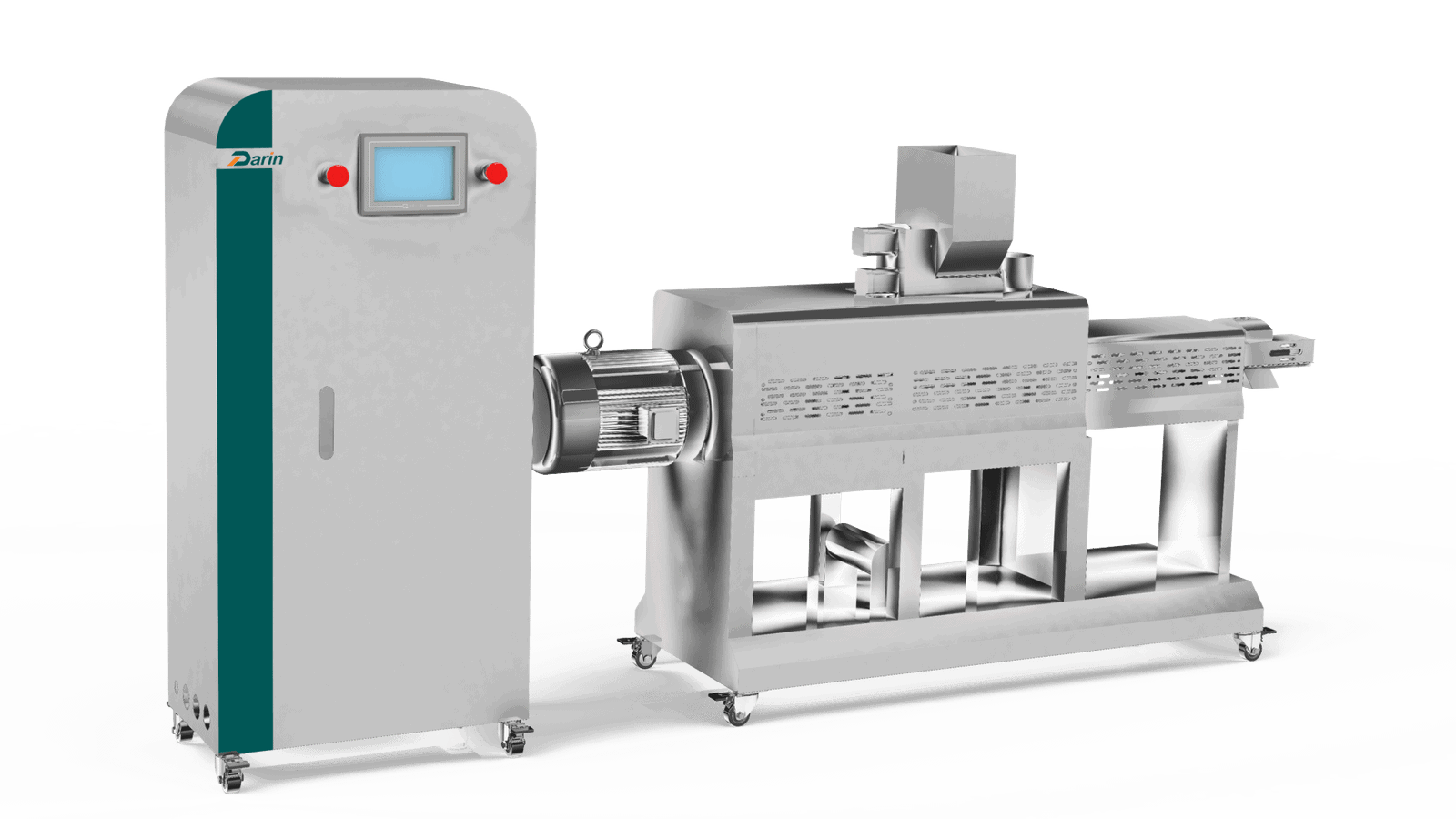
In the competitive pet food manufacturing industry, inefficiencies in extrusion can lead to massive losses—wasted materials, increased downtime, inconsistent product quality, and spiraling energy costs. Many manufacturers struggle with outdated machines, suboptimal formulation processes, and bottlenecks in post-extrusion operations, which ultimately impact profitability and product integrity. The good news? Optimizing your pet food extruder systems and processes can significantly increase throughput, minimize waste, and ensure consistent, premium-quality output. This article reveals the core technical strategies and expert best practices to help you enhance productivity and performance with your pet food extrusion line.
To optimize production efficiency with pet food extruders, manufacturers must focus on process parameter control (moisture, temperature, screw speed), raw material consistency, preventive maintenance, and post-extrusion integration. Utilizing automation and real-time data monitoring further enhances control over quality and throughput. Efficient die design, energy management, and staff training also play pivotal roles in reducing downtime and maximizing output.
If you’re looking to boost the productivity of your extrusion line without compromising on pet food quality, this article will guide you through everything—from screw configuration and die optimization to drying and coating efficiencies. Keep reading to discover how leading pet food factories around the world are achieving peak performance.
Adjusting screw speed in pet food extruders impacts both texture and throughput.True
Higher screw speeds increase shear and cooking but can reduce retention time, requiring balance for optimal texture and capacity.
Using fresh meat in extrusion leads to more equipment wear compared to dry meal.True
Fresh meat's higher moisture content can increase corrosion and mechanical strain on extruder components.
Extrusion cannot produce grain-free pet food.False
Extrusion is a versatile method capable of processing both grain-inclusive and grain-free formulations.
Why Extruder Efficiency Matters in Pet Food Manufacturing
Extrusion is the heart of most dry pet food production processes. The extruder cooks, shapes, and expands the kibble in a continuous operation, affecting everything from texture and palatability to density and digestibility. But if the extruder system is not running efficiently, the entire production chain suffers.
The optimization of extrusion efficiency starts with understanding what variables influence performance. These include:
- Formulation and ingredient quality
- Moisture and pre-conditioning systems
- Extruder configuration (screw design, barrel setup)
- Energy consumption and heat transfer
- Post-extrusion handling: drying, cooling, coating
- Control systems and automation
Let’s break down these areas with technical clarity and data-backed insights.
Table 1: Key Process Parameters and Their Impact on Output
| Parameter | Optimal Range | Impact on Efficiency | Monitoring Method |
|---|---|---|---|
| Barrel Temperature | 100–160°C | Affects cook rate, expansion, and energy use | Thermocouple sensors |
| Screw Speed | 300–500 rpm | Controls shear, residence time, throughput | Variable frequency drive (VFD) |
| Moisture Content | 25–30% pre-extrusion | Critical for expansion and texture | Inline moisture analyzer |
| Die Pressure | 100–250 bar | Affects shape, density, risk of blockage | Pressure transducers |
| Feed Rate | Consistent flow | Prevents surges or starvation in extruder | Loss-in-weight feeders |
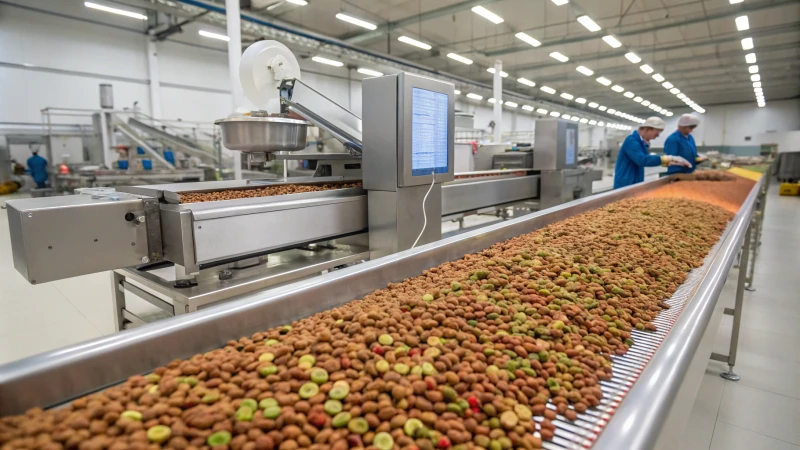
Optimizing Raw Material Preparation
Pet food formulation includes complex blends of animal proteins, fats, vegetables, grains, and supplements. The consistency of these ingredients determines how well they perform in extrusion. Particle size, moisture content, and temperature must be tightly controlled before materials enter the extruder.
- Grinding: Uniform particle size (typically 0.8–1.2 mm) allows consistent hydration and cooking.
- Pre-conditioning: Adding steam and water improves gelatinization and reduces energy demand inside the extruder.
- Ingredient blending: Automated batching systems reduce human error and keep formulas exact.
Tip: Consider using inline NIR (near-infrared) sensors to detect protein, fat, and moisture in real time.
Screw and Die Configuration—Custom Engineering Matters
Each recipe and desired kibble shape may require a different screw or die setup. Improper screw profile design leads to inconsistent residence time and pressure spikes, both of which lower yield and increase wear.
Table 2: Common Screw Elements in Extruders
| Screw Element | Function | Effect on Output |
|---|---|---|
| Conveying Element | Moves material forward | Controls throughput |
| Kneading Block | Shears and mixes | Affects texture and cook level |
| Reverse Screw | Creates backpressure | Enhances cooking and shaping |
| Vent Zone | Releases steam | Improves expansion control |
Die selection influences shape retention, density, and cooking behavior. A self-cleaning die head helps reduce downtime and improves hygiene compliance.
Automation and Process Control
Advanced control systems allow operators to adjust and monitor key parameters without manual intervention. SCADA (Supervisory Control and Data Acquisition) platforms integrated with PLCs offer precision, consistency, and traceability.
Benefits of automation include:
- Real-time alerts on deviations
- Predictive maintenance scheduling
- Batch traceability and quality reporting
- Energy usage optimization
Energy Efficiency and Sustainability
Pet food extrusion is energy-intensive. However, through proper optimization, energy savings of up to 20–30% are achievable. Focus areas:
- Recovering heat from exhaust for steam generation
- Switching to high-efficiency motors (IE3/IE4)
- Upgrading insulation and heat transfer components
- Using variable frequency drives (VFDs) to adjust motor speed dynamically
Post-Extrusion Handling—Drying, Coating, and Cooling
After extrusion, the kibble must be dried and cooled to safe moisture levels (usually below 10%). Then, it may be coated with fats or palatants for flavor enhancement.
- Multi-pass belt dryers ensure even drying, prevent burning.
- Vacuum coating systems provide uniform fat coverage and deeper flavor penetration.
- Cyclone separators and bag filters help manage exhaust air and dust.
Downtime or inefficiencies in these post-processing areas often go unnoticed but can reduce overall line efficiency by up to 18%, according to field studies.
Preventive Maintenance and Staff Training
Even the most advanced extruder fails without trained operators and routine upkeep. Schedule daily, weekly, and monthly checks on:
- Bearings, seals, and gearboxes
- Wear parts (screws, barrels, dies)
- Control panel and software diagnostics
- Lubrication and vibration levels
Training staff to recognize early warning signs—such as fluctuating pressure or abnormal vibration—can prevent catastrophic failure.
Case Study:
A leading European pet food producer improved their output by 28% within 6 months by:
- Upgrading to an energy-efficient twin-screw extruder
- Automating feed rate with load cell-based dosing
- Adding an inline fat coater with vacuum chamber
- Installing AI-powered SCADA for predictive analytics
Conclusion: The Road to Peak Efficiency
Optimizing production efficiency with pet food extruders is a multidisciplinary task involving equipment design, process engineering, automation, and staff training. The key lies in identifying bottlenecks across all stages—from raw material intake to final packaging—and implementing data-driven improvements.
Whether you're operating a small batch plant or a fully automated extrusion facility, the principles shared above can help you reduce costs, improve consistency, and scale your operations with confidence.
Contact Us Today
Need help upgrading your extrusion line or troubleshooting performance issues? We are a professional manufacturer and supplier of advanced pet food extruders, pre-conditioners, dryers, and coating systems. Contact our expert engineering team today for a free consultation and customized efficiency audit tailored to your plant’s needs. Let us help you build a smarter, more productive pet food production line.
👉 Contact Us Now for technical support, system upgrades, and turnkey solutions.
FAQ
Q1: How can I improve production efficiency with pet food extruders?
A1: Improving production efficiency with pet food extruders involves optimizing several variables, including feed formulation, equipment maintenance, processing parameters, and automation. Start by fine-tuning the moisture content and temperature settings, which directly affect texture and output. Regularly clean and inspect your extruder to prevent buildup and wear. Upgrading to newer extruder models with advanced control systems can provide real-time data to make informed decisions and reduce downtime. Additionally, train staff to recognize performance issues early and perform quick interventions.
Q2: Why is temperature control crucial in pet food extrusion?
A2: Temperature control during extrusion is vital because it influences the physical characteristics of the final pet food, such as texture, digestibility, and appearance. Improper temperatures can cause undercooking or overcooking, leading to product rejection and waste. Accurate temperature monitoring ensures uniform cooking, reduces energy consumption, and enhances the consistency of output. Investing in reliable sensors and automated control systems can significantly enhance this aspect of the process.
Q3: Does extruder maintenance affect production output?
A3: Yes, routine maintenance is critical for sustaining high production output. Poorly maintained extruders suffer from increased friction, wear, and component breakdowns, leading to unplanned downtime. Implementing a preventive maintenance schedule—such as regular inspection of dies, knives, and barrel alignment—helps maintain optimal performance and extends equipment lifespan. Lubrication and cleaning are also essential to ensure smooth operation and product quality.
Q4: What role does automation play in optimizing extruder efficiency?
A4: Automation plays a significant role by enabling real-time monitoring, reducing human error, and streamlining operations. Modern extrusion systems with PLCs (Programmable Logic Controllers) and SCADA (Supervisory Control and Data Acquisition) software allow operators to adjust parameters like feed rate, temperature, and pressure with precision. This results in consistent product quality, higher throughput, and minimized waste. Automation also improves safety and facilitates traceability for regulatory compliance.
Q5: How does ingredient formulation impact extruder performance?
A5: Ingredient formulation directly affects how the mixture behaves during extrusion. The choice and ratio of protein, fat, fiber, and moisture influence how the product expands and cooks. Poor formulation can lead to clogged dies, inconsistent shapes, or crumbly textures. Collaborate with a nutritionist to create recipes that not only meet nutritional standards but also process efficiently. Using pre-conditioned materials and additives can further enhance flowability and reduce energy consumption during extrusion.
References
- Improving Extruder Efficiency – https://www.extru-techinc.com/blog/improving-extruder-efficiency – Extru-Tech
- Pet Food Processing Technology – https://www.petfoodindustry.com/topics/306-pet-food-processing – Pet Food Industry
- Principles of Extrusion Cooking – https://www.aaccnet.org/publications/cc/backissues/2006/Documents/83_4_0724.pdf – AACC International
- Maintenance Tips for Extruders – https://www.buhlergroup.com/content/buhlergroup/global/en/industries/pet-food.html – Bühler Group
- Optimization of Feed Formulation – https://www.sciencedirect.com/science/article/pii/S2211912415000120 – ScienceDirect
- Extruder Design and Control Systems – https://www.andritz.com/products-en/pp-extruder-aquatic-feed – Andritz
- Energy Efficiency in Extrusion – https://www.enerquip.com/blog/energy-efficiency-extrusion-process/ – Enerquip
- Quality Control in Pet Food Processing – https://www.nutrition.tufts.edu/news/pet-food-quality-control – Tufts University
- Automation in Food Processing – https://www.automation.com/en-us/articles/october-2020/automation-food-beverage-manufacturing – Automation.com
- Advances in Pet Food Extrusion – https://www.mdpi.com/2304-8158/10/12/3106 – MDPI Foods


